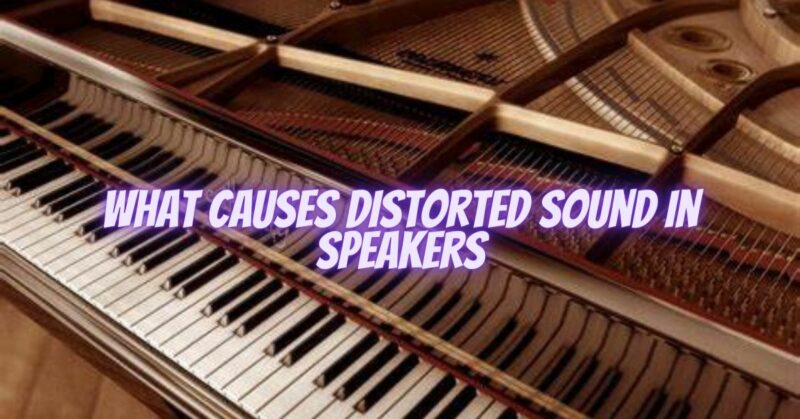Distorted sound from speakers can be an annoyance that compromises audio quality and listening pleasure. Understanding the potential causes of distorted sound is key to troubleshooting and resolving the issue effectively. In this article, we will explore common culprits that can lead to distorted sound in speakers, shedding light on the underlying reasons and offering insights for improvement.
- Overloading and Clipping:
Overloading speakers with excessive volume levels or driving them beyond their power handling capabilities can result in distorted sound. When pushed too hard, the audio signal may exceed the speaker’s limits, causing it to clip. Clipping occurs when the speaker fails to accurately reproduce the waveform, resulting in distortion and audible artifacts.
- Amplifier or Receiver Issues:
Inadequate amplifier power or faulty receiver components can introduce distortion. Insufficient amplifier power can cause the signal to be underdriven, leading to clipping or low-fidelity sound reproduction. Similarly, faulty amplifier components, such as capacitors or transistors, can introduce distortion into the audio signal.
- Speaker Damage or Misalignment:
Physical damage or misalignment of speaker components can cause distorted sound. Damaged voice coils, torn speaker cones, or loose connections can alter the speaker’s ability to accurately reproduce sound, resulting in audible distortion. Likewise, misaligned drivers or incorrectly positioned speaker components can impact sound quality.
- Acoustic Issues and Room Reflections:
Room acoustics play a significant role in sound quality. Reverberations, echoes, and reflections can interfere with the direct sound from the speakers, causing distortion. Excessive bass buildup, flutter echoes, or standing waves in the listening environment can all contribute to distorted sound.
- Poor Source Quality or Audio Compression:
Low-quality audio sources, such as low-bitrate files or poorly encoded music, can introduce distortion into the audio signal. Compression artifacts and lossy file formats can result in compromised sound quality and audible distortion. Using high-quality audio sources can help mitigate this issue.
- Interference and Grounding Problems:
Electrical interference from nearby electronic devices, poor grounding, or faulty cables can introduce noise and distortion into the audio signal. Common culprits include cell phones, Wi-Fi routers, fluorescent lights, or improperly shielded cables. Ensuring proper grounding and minimizing interference sources can help alleviate distortion issues.
- EQ Settings and Audio Processing:
Incorrect equalizer (EQ) settings or excessive audio processing can introduce distortion. Excessive boosting or cutting of certain frequency ranges can lead to imbalanced sound reproduction and audible artifacts. Properly calibrating EQ settings and reducing excessive audio processing can help mitigate this issue.
Conclusion:
Distorted sound in speakers can stem from various factors, including overloading and clipping, amplifier or receiver issues, speaker damage or misalignment, acoustic issues, poor source quality, interference, and EQ settings. Identifying the underlying cause of the distortion is crucial for effective troubleshooting and resolution. By considering these potential culprits, you can take appropriate measures such as adjusting volume levels, inspecting and repairing speaker components, optimizing room acoustics, using high-quality audio sources, addressing interference sources, and calibrating EQ settings. Through careful analysis and troubleshooting, you can restore optimal sound quality and enjoy distortion-free audio from your speakers.


